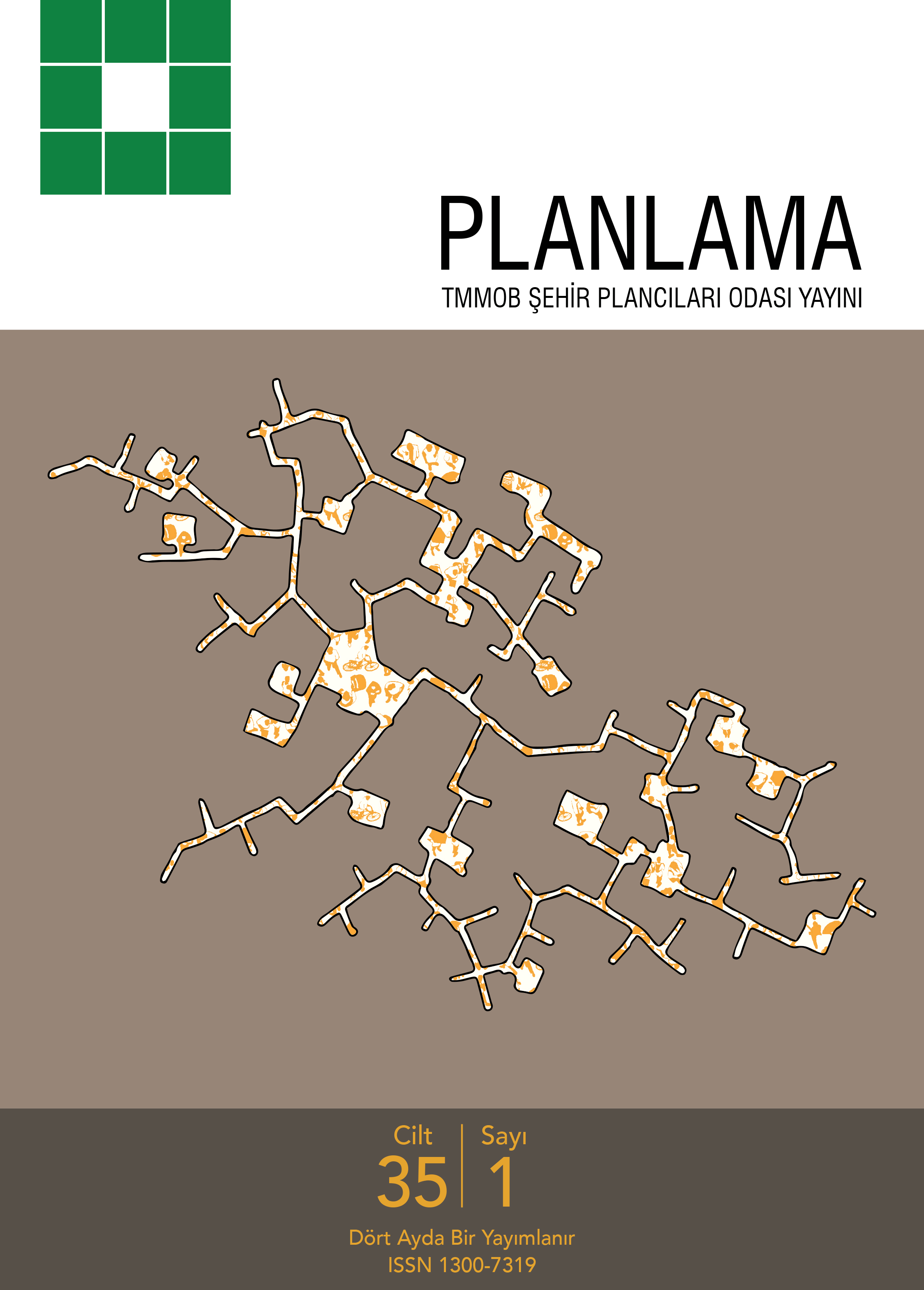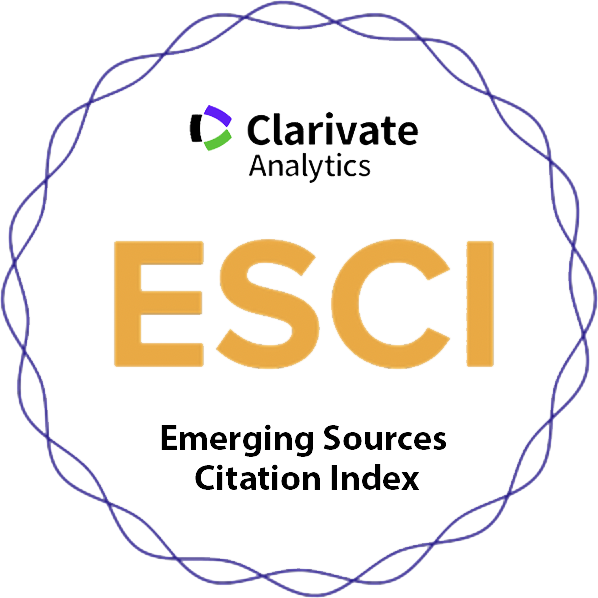Volume: 29 Issue: 1 - 2019
| REVIEW | |
| 1. | Green Settlement Planning and Design: The First National and Institutional Certification Attempt for Turkey Özlem Özçevik, Melis Oğuz, Ayşe Akbulut doi: 10.14744/planlama.2019.27146 Pages 1 - 9 Abstract | |
| RESEARCH ARTICLE | |
| 2. | A Review of the Climate Change Related Activities of Regional Development Agencies Between 2010-2017 in Turkey Tansel Erbil, Aslı Öğüt Erbil doi: 10.14744/planlama.2019.59144 Pages 10 - 22 Global Climate Change (CC) problem has been intensifying its place in the world agenda in recent years as a result of the economic development policies implemented by the countries. Countries have taken up the issue of combating CC in the context of development policies at national level and commitments to adapt to emission reduction in line with the targets set through global agreements and partnerships. Development Agencies (DA), function as intermediate agent in implementation of the regional level development policies in Turkey. Regional development plans are prepared in accordance with the national level plans that were set by the national development priorities. In line with these policies, various financial and technical supports, activities such as publications, events and meetings aimed at the regional scale are carried out. In this study, CC related activities of the DAs between 2010 and 2017 were analyzed quantitatively and the annual change in these activities and their distribution into different types of activities were examined. As a result of the research, it was observed that DAs have tendency to decrease their CC related activities through 12 basic areas related to 4 major activities: Project Support, Project Call, Activity and Publication. It was determined that the activities of the DAs related to CC are shaped according to the interregional development differences of DAs respected regions. |
| 3. | An Investigation of the Effects of Housing Production Performance on Housing Affordability Esma Aksoy Khurami, Özgül Burcu Özdemir Sarı doi: 10.14744/planlama.2019.59672 Pages 23 - 32 With the 58th Governments Urgent Action Plan, including country-wide housing program, Housing Development Agency (HDA) has been one of the most influential actors in the construction sector. While HDA was leading to mass housing and urban transformation projects, it also targeted to provide housing for low and middle-income households. To do that, it executed various housing implementations in different regions of Turkey. However, the regional contribution of these activities to the housing affordability of households was not considered. Turkish urban policies, which are generally determined without the needs assessments and current situation analysis, are not monitored for their achievement of the expected outcomes or creation of unexpected impacts. On the contrary, a successful policy-making process requires analyzing needs and the current situation and monitoring the results of the implementation. With the country-wide housing program, based on the prevailing discourse of housing shortage and not backed up by scientific assessments, the housing production capacity of Turkey has considerably increased. This study aims at understanding and revealing the main effects of HDAs housing policies and production for low-income households on housing affordability issue. The results of the study indicate that although there are significant improvements in housing affordability of households, housing affordability ratio of regions is still higher than the predefined affordability criterion which is 30%. Even one of HDAs primary target is to provide housing for low-income households, the lack of contribution of its housing production to the housing affordability of low-income groups was observed. |
| 4. | Development of a GIS Tool for the Identification of Environmental Sustainability Performance of Spatial Plans Emin Yahya Mentese, Azime Tezer, Mehmet Demir doi: 10.14744/planlama.2018.65002 Pages 33 - 49 Impacts caused by plans that are the primary components of spatial development are one of the initial subjects of the planning process. Therefore, analysing and understanding the impacts of the plans constitute a critical stage in this process. With the aim of contributing and enhancing planning procedures, this study focuses on modelling the impacts of plans on environmental sustainability state of the planning area with an analytical approach. Thereby a plan can be assessed based on its impact/benefit on the use, consumption and sustaining of the natural resources. Today, possible environmental results of the plans are estimated mostly based on changes in quantity values such as changes of size or area of natural environments or changes of green space area per person. On the other hand, a plans tangible results on the ecosystem process are not analyzed via an analytical method. For example, a plans impact on air quality, adequacy of water resources or continuity of biodiversity is not or cannot be assessed. This sort of implementation leads to unexpected effects occurred by plans and transforms cities into unlivable areas. To remove this gap in planning process; this research focuses on development of a model that enables to define environmental sustainability as a function of ecosystem services and evaluate the impacts of especially strategic level spatial plans on services and benefits provided by ecosystems. In recent studies, there are various methods developed for understanding the ecosystem service potential of land uses. Among these models, Burkhard et al.s (2009) study is notable by implementing an efficient matrix model that includes ecosystem service potentials of land uses. The values of the potential are gathered by the expert-based and data-based scoring of each land uses ecosystem services potential. In this research matrix model is re-evaluated and expanded to include the impacts of land uses in addition to ecosystem services. Hence both the benefits and harms on ecosystems occurred by land use are involved in the matrix. Then these values are integrated into GIS; consequences of a plan on current land are and sustainability performance of the plan and implementation area is analyzed. As a result, relationship between environmental sustainability and land use plan is modelled. |
| 5. | The Importance of Institutional Capacity Creating in Urban Transformation Processes Yavuzalp Tüfekçi, Elif Alkay doi: 10.14744/planlama.2019.39358 Pages 50 - 58 Law Regarding the Transformation of Areas under Risk of Disaster (Law No: 6306 enacted in 2012) made all urban areas subject to urban transformation. Although the Ministry was principal authority, implication process was delegated to the responsibility of local authorities. In order to achieving implication processes, local authorities have to being restrucured institutionally and creating institutional capacities. Some concerns have been arisen in restructuring process that those, eventually, define the method of the capacity creating in order to succeed the targeted transformation action in the targeted area. Concerns are upon those questions: what is the way of establishing institutional capacity? What is the way of setting institutional strategic vision in order to achieving targeted urban transformation? What is the way of setting relations between the institution and other related institutions? What is the way of setting relations between the institution and actors involved in the transformation process? In that context, the aim of this research is to investigate the capabilities of local authorities in institutional restructuring and institutional capacity creating. Investigation was done by face-to-face interviews with three different metropolitan municipalities and evidences were discussed consistent with theoretical background. |
| 6. | Detection of Landscape Change with Cartographic Analysis and Commented Walk Methods: The Case of İzmir-Selçuk Seher Demet Kap Yücel doi: 10.14744/planlama.2018.94834 Pages 59 - 77 Multiple methods of determining the temporal change of landscape which is a product of the complex relations between man and nature have been the foreground in the last 30 years. The issue has been tried to be explained by its own methods and techniques of different disciplines and it has developed with different theories in this context. The aim of this article is to determine the changes in landscape by using multiple methods, to determine the change processes in the landscape and to assessment them within the scope of population data and plans. For this purpose, landscape changes from 1957 to 2009 in the study area which is covering the city centre of İzmir Selçuk district and surroundings of the city centre were quantitatively determined by cartographic analysis and qualitatively by commented walk methods. The research area was classified according to 4 land use/land cover type, including artificial field, agricultural areas, fruit gardens/olive grove areas and others. Within this scope, statistical and spatial changes of the study area were determined and 4 change processes were defined quantitatively as urbanization, increased cultivated land, re-vegetation and maintenance of land cover (no change). For the qualitative part of the study, commented walks were carried out with 15 people. The information obtained from the guidelines was evaluated under 4 thematic headings: change in agricultural areas, change of fruit gardens/olive grove areas, change of artificial field and other changes in landscape. As a result of this evaluation, the change in the landscape has been spatially determined and mapped, and it has been seen that it refers to 2 change processes as urbanization and maintenance of land cover (no change). As a result of the research, it was seen that the deficiencies of both methods were complementary to each other in comparing the findings obtained from qualitative and quantitative methods. In this context, it is seen that multiple methods, especially the change in land cover/use, will create an opportunity in urban studies. |













